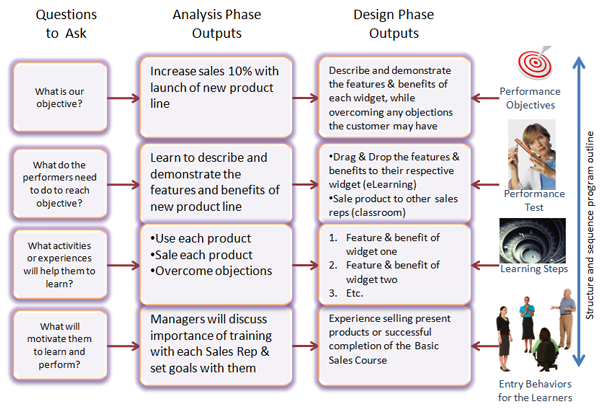List Entry Behaviors
A sample of the target population of learners should be tested to determine if their entry behavior, composed of knowledge, skills, and abilities (KSA) match the proposed level of instruction. To determine the entry behavior, test a small sample of the learners to establish if your assumption of their threshold knowledge and the starting point of the training program are correct.

That is, do the proposed learners have the needed KSAs to master the terminal learning objective in the training program or must they be taught additional enabling objectives? In addition, ensure you are not teaching what they already know.
For example, an instructional program might instruct several advanced uses of a piece of diagnostic equipment. The instructional plan is initially based on the assumption that the learners have mastered the basic diagnostic procedures for the equipment from prior experience or training. These basic diagnostic procedures should be tested on a sample of the learners to validate the instructional plan assumption. If they have not mastered one or more of the basic diagnostic procedures, then these will have to be accounted for in the training plan.

Once you have tested their present KSAs, then the tasks to be taught should be tested on a small sample of personnel who have mastered the tasks previously to ensure the proposed solution is correct.
Finally, a sample of the proposed learners are tested to see if they can pass any portions of the test without any instruction to ensure you are not teaching them what they already know.
This process helps you to ensure the training provides scaffolding (Reigeluth, Stein, 1983) — presenting the instructional content to the learners in a manner that allows them to build upon previous content (what they already know).
Motivation
As shown in the Backwards Planning Model, motivation is also tied to Entry Behaviors (bottom row):

Most employees are motivated to learn new skills that make their work easier or faster, improve their working environment, and increase their chances for promotion, recognition, and so forth (Wick, Pollock, Jefferson, Flanagan, 2006).
Motivation is also tied closely with what they think their managers want them to do — they perform the things they know their managers notice and tend to neglect the things their mangers do not care about. Thus, it is not only important that they have the basic requirements before entering a learning platform, but that they are also motivated to learn. You have to not only ensure their mangers will support the learning platform, but that the learners know how the new skills and knowledge they master will improve the organization.
Next Steps
Read about performance gaps
Go to the next section: Sequence and Structure
Return to the Table of Contents
Pages in the Design Phase
-
List Entry Behaviors
References
Reigeluth, C.M., Stein, F.S. (1983). The Elaboration Theory of Instruction. Instructional Design Theories and Models: An Overview of their Current States. Reigeluth (ed). Hillsdale, NJ: Lawrence Erlbaum.
U.S. Army Field Artillery School (1984). A System Approach To Training (Course Student textbook). ST - 5K061FD92
U.S. Department of Defense Training Document (1975). Pamphlet 350-30. August, 1975.
Wick, C., Pollock, R., Jefferson, A., Flanagan, R. (2006). Six Disciplines of Breakthrough Learning: How to Turn Training and Development Into Business Results. San Francisco: Pfeiffer
